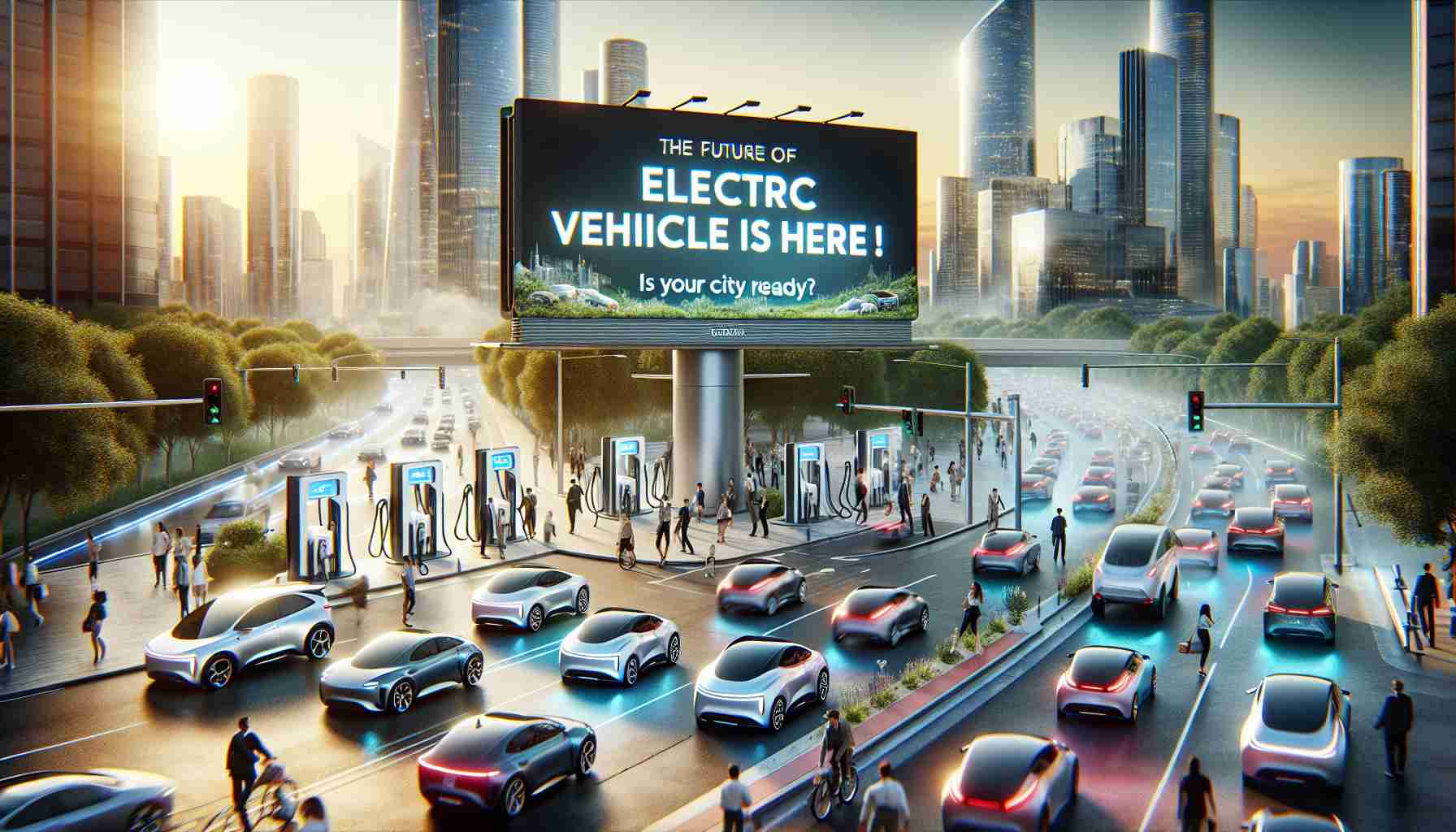Transforming the landscape of electric vehicles (EVs) relies heavily on consumer confidence. According to industry expert Banerjee, the launch of the e Vitara could pave the way for a significant shift in EV adoption. He stated that addressing range anxiety—the fear of running out of power without access to charging—remains crucial for consumers considering electric options.
In 2022, EV adoption was only at 2.4%, marking stagnation compared to the previous year. The automotive sector is acutely aware that without resolving consumer concerns, growth in this area will be slow. Banerjee projected that if the infrastructure for EVs improves, it could lead to a tenfold increase in the market over the next six years, expanding from 1 lakh units to an impressive 1 million.
The e Vitara was showcased at the Bharat Mobility Global Expo 2025, with pricing expected between Rs 18-22 lakh. This new electric SUV will be in competition with notable models such as the Mahindra BE 6 and Tata Curvv EV, among others. Hyundai is also making strides in EV infrastructure, planning to set up nearly 600 fast-charging stations nationwide within the next seven years.
Banerjee also indicated that the vision for the future includes the introduction of up to five more affordable EV models within the next five years, especially targeting the mid-SUV segment as a key market focus. The future of EVs is not only promising but inevitable.
The Future of Electric Vehicles: A Catalyst for Change
The burgeoning electric vehicle (EV) market is more than just an automotive trend; it signifies a profound shift in society’s environmental consciousness and technological landscape. Consumer confidence in EVs is pivotal, as highlighted by industry analyst Banerjee. A successful launch of models like the e Vitara marks a crucial step in alleviating range anxiety, potentially expanding EV adoption beyond the current stagnation of 2.4%.
The implications are extensive, impacting societal norms regarding transportation and sustainability. As infrastructure improves—evident with Hyundai’s ambitious plan for 600 fast-charging stations—consumers are likely to perceive EVs as not just feasible but essential. This could trigger a cyclical growth effect, propelling the market from 1 lakh to 1 million units in just six years.
On a global scale, a surge in EV adoption can significantly contribute to reducing greenhouse gas emissions, aligning with international climate goals. Additionally, as more affordable models flood the mid-SUV segment, a broader demographic can participate in this eco-friendly movement.
In the long run, the evolution of EVs is set to reshape global economies. Investment in battery technology and infrastructure could stimulate new sectors, creating jobs and innovative solutions for sustainability challenges. Ultimately, the future of electric vehicles promises not only enhanced mobility but also a redefinition of cultural values centered on ecological stewardship.
The Future of Electric Vehicles: How the e Vitara Is Set to Change the Game
Transforming the Electric Vehicle Landscape
The momentum toward electric vehicles (EVs) is gaining traction, and industry experts are observing a potential breakthrough with the introduction of models like the e Vitara. According to insights from industry analyst Banerjee, addressing range anxiety—the fear that consumers have of running out of battery before finding a charging station—is crucial for the broader acceptance of EVs. As the market evolves, consumer confidence will play a pivotal role in driving this transition.
Current EV Adoption Trends
In 2022, the adoption rate of electric vehicles was a modest 2.4%, indicating a stagnation in growth compared to previous years. Current projections suggest that without addressing consumer concerns around infrastructure, like charging accessibility, the growth in EV adoption may remain sluggish. However, the narrative could shift dramatically if infrastructure improvements are implemented. Banerjee has projected a potential tenfold increase in market size over the next six years, envisioning a rise from approximately 100,000 units to 1 million.
Upcoming Models and Market Competition
The e Vitara, showcased at the Bharat Mobility Global Expo 2025, is expected to be priced between Rs 18-22 lakh. This electric SUV will vie for market share with established contenders such as the Mahindra BE 6 and Tata Curvv EV. Notably, Hyundai is also stepping up its game in the EV space, planning to launch nearly 600 fast-charging stations across the country over the next seven years, significantly enhancing the charging infrastructure.
Future Prospects and Innovations
Banerjee further envisions the release of up to five more affordable EV models in the coming five years, particularly focusing on the mid-SUV segment. This likely reflects an understanding of consumer needs and market demand, promising a diverse range of options for buyers.
Key Takeaways
Pros and Cons of Electric Vehicles
– Pros:
– Environmental benefits due to lower emissions.
– Potential cost savings on fuel and maintenance.
– Innovations in technology leading to improved performance.
– Cons:
– Initial purchase price can be higher than traditional vehicles.
– Range anxiety can hinder consumer adoption.
– Charging infrastructure may not be widely accessible in all areas.
Security Aspects
As the EV market grows, so do concerns regarding cybersecurity. With vehicles becoming increasingly connected, manufacturers must prioritize robust cybersecurity measures to safeguard driver data and vehicle systems.
Market Analysis
As the demand for electric vehicles grows, there’s an emphasis on innovation, especially regarding enhancing battery life and charging technology. The projections for EV sales indicate a significant shift in consumer behavior, especially as companies like Hyundai expand infrastructure projects.
Pricing and Availability
With the e Vitara priced competitively, it stands to appeal to a growing consumer base eager to make the shift to electric. The anticipated release of diverse models within the segment will likely cater to various price points, encouraging wider acceptance.
Predictions for the EV Industry
Looking ahead, the electric vehicle market is poised for transformative changes. Predictions suggest that improved infrastructure, consumer education, and technological advancements will lead to a more robust EV sector—one that could see exponential growth in the near future.
For more insights on electric vehicles and sustainable automotive trends, visit Auto Express.








